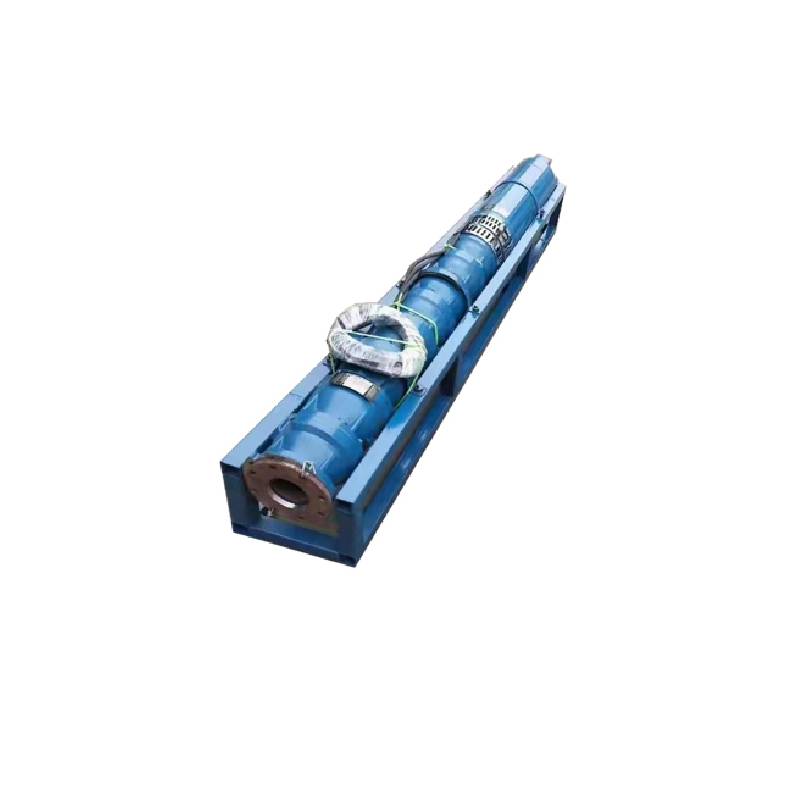Nov . 11, 2024 06:39 Back to list
deep well submersible pumps
Understanding Deep Well Submersible Pumps
Deep well submersible pumps are essential devices used in a variety of applications, from agricultural irrigation to municipal water supply systems, and even in industrial facilities. Unlike standard pumps that operate at or above ground level, submersible pumps are designed to operate underwater, which allows them to efficiently pump water from deep wells, often extending hundreds of feet below the surface.
Functionality and Design
The fundamental design of a deep well submersible pump consists of a motor and a pump, both of which are submerged in the fluid being pumped. This design allows the pump to push water to the surface rather than pulling it, which increases efficiency and minimizes the risk of cavitation—a phenomenon that can damage pumps when water levels fluctuate. The pump is typically sealed in a cylindrical casing, preventing water from infiltrating its motor and protecting it from environmental elements.
One of the key advantages of submersible pumps is their ability to lift water from depths that are inaccessible to conventional pumps. While standard pumps may struggle to lift water from deep wells due to atmospheric pressure limitations, submersible pumps use a series of impellers to create high pressure, pushing the water through the discharge line effectively.
Applications
Deep well submersible pumps have a wide range of applications. In agriculture, they are crucial for irrigation systems, ensuring that crops receive adequate water supply even in arid conditions. Municipalities rely on these pumps to supply potable water to residents. Many modern water supply systems incorporate deep well submersible pumps because they are more energy efficient than traditional pumps and can cover larger areas with less energy consumption.
deep well submersible pumps

Additionally, deep well submersible pumps are commonly used in wastewater management. Their design allows for efficient pumping of sewage and wastewater, which is particularly important in urban settings. Furthermore, industries also utilize these pumps for dewatering applications, such as mining or construction projects, where the removal of water is critical for operations.
Maintenance and Considerations
Despite their robust design, deep well submersible pumps require regular maintenance to ensure longevity and optimal performance. Common maintenance practices involve routine inspections for wear and tear, checking motor performance, and testing for leaks in the casing. Proper installation is also vital; incorrect positioning can lead to inefficiencies and potential failures.
When choosing a deep well submersible pump, factors such as well depth, water flow rate, and the specific characteristics of the water being pumped (such as its temperature and chemical composition) must be taken into account. Selecting the right pump ensures efficiency and minimizes operational costs.
Conclusion
In conclusion, deep well submersible pumps play a critical role in various sectors, offering efficient and reliable solutions for water extraction and management. Their ability to operate underwater and their energy efficiency make them preferable for deep well applications. However, understanding their functionality, proper maintenance practices, and selecting the appropriate pump for specific needs is crucial for optimal performance and longevity. As urban populations grow and water demands increase, the reliance on deep well submersible pumps is likely to continue, highlighting their importance in modern water management systems.
-
Submersible Water Pump: The Efficient 'Power Pioneer' of the Underwater World
NewsJul.01,2025
-
Submersible Pond Pump: The Hidden Guardian of Water Landscape Ecology
NewsJul.01,2025
-
Stainless Well Pump: A Reliable and Durable Pumping Main Force
NewsJul.01,2025
-
Stainless Steel Submersible Pump: An Efficient and Versatile Tool for Underwater Operations
NewsJul.01,2025
-
Deep Well Submersible Pump: An Efficient 'Sucker' of Groundwater Sources
NewsJul.01,2025
-
Deep Water Well Pump: An Efficient 'Sucker' of Groundwater Sources
NewsJul.01,2025
-
 Submersible Water Pump: The Efficient 'Power Pioneer' of the Underwater WorldIn the field of hydraulic equipment, the Submersible Water Pump has become the core equipment for underwater operations and water resource transportation due to its unique design and excellent performance.Detail
Submersible Water Pump: The Efficient 'Power Pioneer' of the Underwater WorldIn the field of hydraulic equipment, the Submersible Water Pump has become the core equipment for underwater operations and water resource transportation due to its unique design and excellent performance.Detail -
 Submersible Pond Pump: The Hidden Guardian of Water Landscape EcologyIn courtyard landscapes, ecological ponds, and even small-scale water conservancy projects, there is a silent yet indispensable equipment - the Submersible Pond Pump.Detail
Submersible Pond Pump: The Hidden Guardian of Water Landscape EcologyIn courtyard landscapes, ecological ponds, and even small-scale water conservancy projects, there is a silent yet indispensable equipment - the Submersible Pond Pump.Detail -
 Stainless Well Pump: A Reliable and Durable Pumping Main ForceIn the field of water resource transportation, Stainless Well Pump has become the core equipment for various pumping scenarios with its excellent performance and reliable quality.Detail
Stainless Well Pump: A Reliable and Durable Pumping Main ForceIn the field of water resource transportation, Stainless Well Pump has become the core equipment for various pumping scenarios with its excellent performance and reliable quality.Detail
